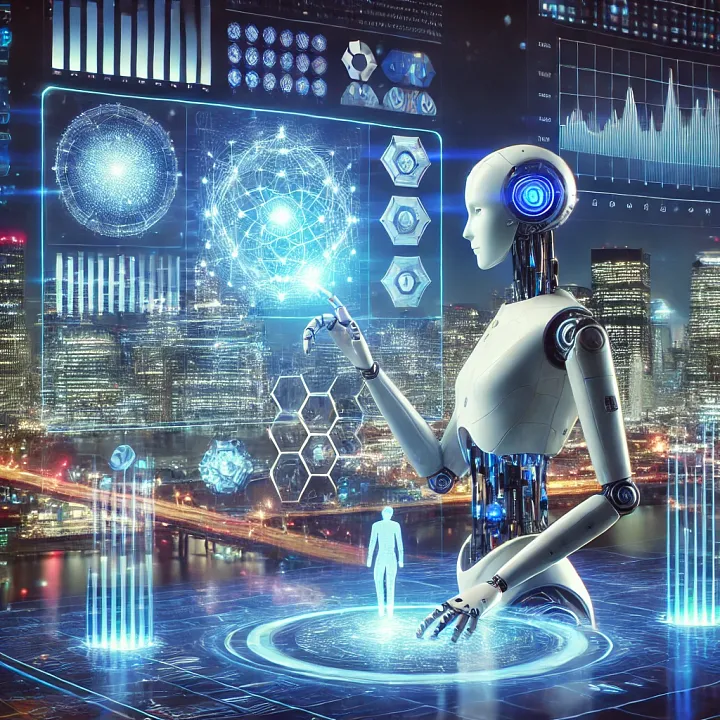What is Generative AI
admin
#AI #Generative AI #Basics of Generative AI #artificial intelligence #AI applications #machine learning
What is Generative AI?
Generative AI is a transformative technology that leverages advanced algorithms to create new content such as text, images, audio, and videos. It goes beyond traditional AI systems that focus on analyzing and predicting outcomes; instead, it generates outputs that mimic human creativity, offering endless possibilities across various industries.

The Basics of Generative AI
At its core, generative AI relies on machine learning, particularly deep learning, to understand patterns in data and produce original content. These systems are trained on vast datasets, learning structures, styles, and contexts to create outputs that resemble human-generated content.
Key Technologies Behind Generative AI
-
Neural Networks: Generative AI heavily uses neural networks, especially architectures like transformers, which excel at understanding and creating sequential data such as text.
-
Generative Models:
- GANs (Generative Adversarial Networks): A pair of networks (generator and discriminator) work together to create realistic data, often used for image generation.
- VAEs (Variational Autoencoders): These are used to generate data in a controlled and interpretable way, often applied in medical and scientific domains.
- Diffusion Models: Recent advancements like DALL·E and Stable Diffusion use these models for generating high-quality images.
- Transformers: Models like GPT (Generative Pre-trained Transformer) and BERT are designed for text generation, coding, and even creative writing.
How Generative AI Works
- Data Collection: Models are trained on large datasets containing various forms of content.
- Training: The AI learns patterns, structures, and relationships in the data.
- Generation: Once trained, the AI can produce content by sampling and recombining learned patterns, often with remarkable creativity.
Applications of Generative AI
Generative AI has permeated numerous industries, driving innovation and efficiency. Here are a few notable examples:
- Content Creation: Automating tasks such as writing blogs, generating marketing copy, or creating personalized emails.
- Art and Design: Tools like DALL·E and MidJourney help artists and designers bring their visions to life with minimal effort.
- Healthcare: Generative AI assists in drug discovery by simulating molecular structures or creating synthetic datasets for training purposes.
- Entertainment: AI-generated music, scripts, and virtual environments are revolutionizing movies, gaming, and interactive media.
- Education: Personalized learning materials and content summaries enhance the learning experience.
- Customer Support: AI chatbots powered by models like GPT can simulate human-like conversations to resolve customer queries.
Benefits of Generative AI
- Efficiency: Automates repetitive and time-intensive tasks.
- Creativity Boost: Assists humans in brainstorming ideas or creating content.
- Accessibility: Makes high-quality content creation available to non-experts.
Challenges and Concerns
Despite its potential, generative AI comes with challenges:
- Bias and Ethics: Since AI learns from human-generated data, it can replicate and even amplify biases present in the training set.
- Misuse: Generative AI can be exploited to create deepfakes, spread misinformation, or infringe on intellectual property.
- Quality Control: AI-generated content may lack nuance or context-specific understanding, leading to inaccuracies.
The Future of Generative AI
Generative AI is evolving rapidly, with advances in models, training techniques, and ethical guidelines. As this technology matures, it will likely become more accessible, reliable, and impactful, reshaping how we work, create, and interact with the world.